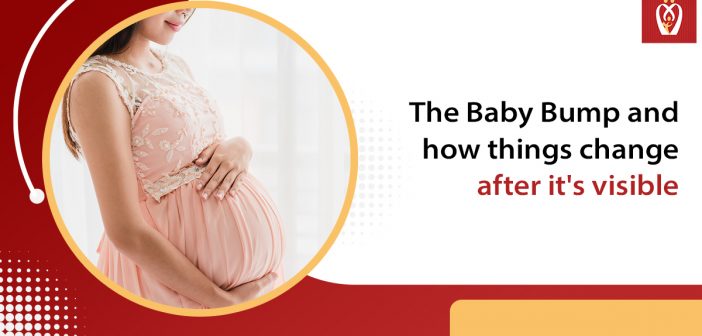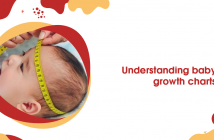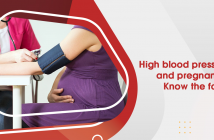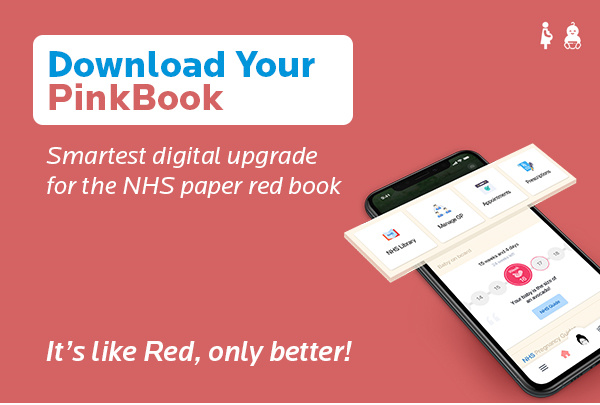Are you curious about the changes your baby bump may go through during your pregnancy? Here’s what to anticipate.
You’re probably unable to stop touching it, and it appears to be growing larger by the day.
You’re probably completely enamoured with your baby bump and the wonderful little being growing inside of it. But how much do you know about the changes taking place on the outside — and the flurry of activity taking place on the inside?

Here are interesting changes regarding your growing baby bump.
-
It will most likely go unnoticed at first.
Sure, if you find out you’re pregnant, you’ll probably feel a lot different on the inside. (It’s really thrilling! And then there’s the morning sickness.) However, you may not appear much further on the exterior, other than that wide smile on your face.
Your baby is still teeny-tiny during the first few weeks of pregnancy. After that, she’s only the size of a poppy seed at four weeks! So, until your baby is roughly the size of lime which takes about 3 months, your baby bump won’t even be palpable. Once palpable, it still takes another month or so for your bump to be visible.
-
However, once you start showing, your stomach will expand quickly (and your skin may show it!).
Stretch marks are microscopic tears that form as your skin’s supporting layers are stretched tight as your belly expands.
If you’re one of the more than half of pregnant women who get skin streaks, you’ll notice them between 13 and 21 weeks of pregnancy. When your tummy starts to stretch around the 35-week mark, the streaks may grow darker and more noticeable.
Stretch marks can’t be prevented (and they’ll diminish after the baby is born). But, in the meantime, make an effort to accept them. Your body is preparing to give birth!
-
Those butterflies in your stomach aren’t necessarily pre-baby jitters. (baby bump)
You may experience a fluttering sensation. This is your baby squirming or fidgeting. Quickening, or early movement, usually begins around 4 or 5 months of pregnancy.
Your baby’s activity level will only increase from there. You might feel tiny feet pitter-pattering about six months. By 28 weeks, your doctor will want you to start “counting kicks,” or foetal movements, to ensure everything is going according to plan.
From about the 28th week, your midwife may recommend you to monitor fetus movement as a way to analyze your baby’s health. The easiest way to do this is to track baby ‘kicks’ and note them down on Nurturey’s easy-to-use kick counter. So Do not miss out on the sheer joy of counting baby’s kicks.
-
That dark line you’re seeing is perfectly normal.
Pregnancy hormones can produce a variety of skin issues, ranging from darker areolas to facial hyperpigmentation. They’re also in charge of your linea nigra, a dark, vertical line that runs from your belly button to your pubic area and appears at 23 weeks. But, again, it’s entirely natural, and it will go away after a few months.
When you walk outside, attempt to keep your tummy covered if you want it to be less noticeable. During pregnancy, sun exposure can exacerbate skin discolouration.
-
Your innie will most likely turn into an outie.
If you have an innie belly button, it won’t stay that way for long. Instead, your belly button will protrude at 26 weeks as your uterus expands, giving it the appearance of an outie.
This, like most of the other changes taking place in your body during those days, is entirely innocuous — and things will return to normal once the baby is born and your stomach deflates.
What if you have a pierced belly button? There’s no need to remove your navel ring as long as your belly button piercing is healed (as in, not new) and healthy.
However, if your expanding belly irritates you, you may wish to remove it or replace it with a straight plastic bar, which may be more pleasant.
-
Your belly is warm and comfortable, but it isn’t soundproof.
Your baby’s ears are developed enough that they can hear your voice as early as 16 weeks. They’re content to be a listener for the time being. However, by 26 weeks, your baby’s brain has matured to the point where she can respond to stimuli. So don’t be startled if she kicks you while you talk to her or sing to her!
You might want to consider picking a specific tune to play for your infant while we’re on the subject of songs. While there is no evidence that playing particular types of music (such as classical) would improve your baby’s IQ, sharing your favourite songs can still be a great way to bond.
Everything will, of course, be a little muted in there. Try talking with your hand over your lips to get a sense of how things will sound to your infant. That’s what your child is hearing!
-
Your baby enjoys it when you rub their belly.
Touching, rubbing, or holding your pregnant belly makes you feel good, but it may also make the baby feel good. According to studies, foetuses respond to belly rubs by moving about a lot. And they’re more likely to react to mom’s familiar touches than to strangers’ touches.
So, don’t stop pressing that baby bump! It can excite your baby, which is very useful when you begin counting kicks. And, of course, it’s a fantastic way to spend time together. When your kid is born, the more you connect with him now, the more familiar he will be with the world beyond the womb.
-
It’s usually fine to measure a little bigger or smaller.
At each prenatal session, your practitioner measures your fundal height — the distance between your pubic bone and the top of your uterus. This number in millimetres roughly corresponds to the number of weeks you’ve been pregnant.
However, a difference of 1 or 2 centimetres in any direction is unimportant, and it doesn’t suggest your baby isn’t growing quickly enough or will be too big to deliver vaginally.
During pregnancy, measuring fundal height could indicate that your due date is incorrect by a few days or a week or that your baby is sitting high in your uterus.
-
As you get closer to the end, your rapidly expanding belly may make things a little uncomfortable.
Your baby grows significantly in size, from around 2 pounds at the end of the second trimester to between 6 and 9 pounds at the end of the third trimester.
You could notice some not-so-fun changes as your baby takes up more and more space in your belly. For example, as your round ligaments stretch to accommodate your developing baby bump, you may experience sharp aches. Also, because your uterus is now pushing against your stomach, you may get heartburn.
Things are ramping up for your baby, too, so don’t be shocked if you detect less powerful kicks and more jabs from knees and elbows in the final weeks of your pregnancy. (However, any changes in foetal movement should always be discussed with your doctor.)
The good news is that you and your partner are almost there. So it won’t be long before you meet for the first time!
-
Your baby bump will not vanish immediately after birth.
Don’t put on those slim jeans just soon when you get home from the hospital. After your kid is born, you’ll still have a post-baby tummy. After all, your uterus, abdominal muscles, and skin stretched over nine months to reach their current size. As a result, it will most likely take at least a few months, if not longer, for things to return to normal (or close).
Suppose you have soreness around your belly button or lower abdomen and your tummy still looks baby bumpy months after giving birth. You may have diastasis recti, which occurs when a developing belly causes abdominal muscles to split and protrude slightly. Diastasis recti can sometimes heal on its own, but if it doesn’t, see your doctor. The majority of the time, specific core exercises can resolve the issue.
Meanwhile, consider all the amazing things your body has accomplished during the last 40 weeks. And don’t forget to enjoy this particular time with your darling baby!
Your belly grows and changes from the moment you start to show to when your baby is born. And now that you know more about your growing baby bump, you’re likely to value it even more. It’s not just the warm, pleasant, nourishing home where your sweet pea will spend her first nine months, but it’s also a means for you and your baby to bond — and even get to know each other — before they arrive. So go ahead and embrace that baby bump!
Nurturey’s PinkBook is the best digital upgrade to the NHS red book. It is designed for expecting mothers and parents of young children. Managing your child’s health and pregnancy week by week is easier with Nurturey’s intuitive tools. In addition, Nurturey’s PinkBook provides timely warnings and reliable NHS assistance to pregnant women and parents so they can focus on their families and their health requirements. Nurturey’s online NHS health services can also be linked to your online GP account. This lets you view the records of your child as well as your own. Through it, you can also schedule appointments with your doctor for your child, for your pregnancy, and your family, as well as reorder medications for yourself and your family.
Nurturey is truly your best pal during your pregnancy, to learn more visit Nurturey.com







